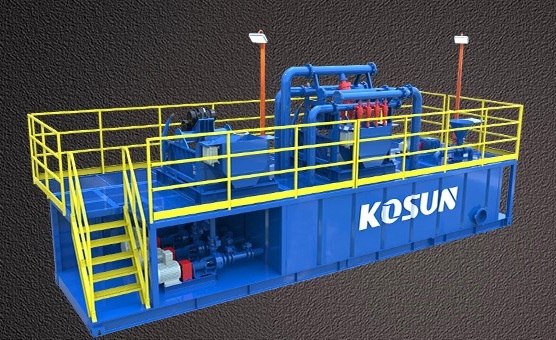- Home
- Products
-
-
Solids Control Equipment
- Linear Motion Shale Shaker
- Decanter Centrifuge
- Mud Cleaner
- Vacuum Degasser
- Centrifugal Pump
- Shear Pump
- Submersible Slurry Pump
- Mud Agitator
- Mud Gun
- Jet Mud Mixer
- Desilter
- Water Tank
- Mud Tank
- Diesel Tank
- MD210 Drilling Mud Cleaner
- Balanced Elliptical Motion Shale Shaker
- Oilfield Drilling Mud Desander
-
Solids Control System
- Drilling Mud Cooling System
- Solids Control System
- Mobile Solids Control System
- Arctic Solids Control System
-
TBM
- Tunnel Boring Mud System
-
HDD
- HDD Mud Recovery System
-
-
- News
- Services
- Marketing
- About Us
- Contact Us
- Videos
Home > KOSUN News >
Introduction to trenchless horizontal directional drilling II
Feb 06, 2025
Definition and ratio parameters of mud in the construction of trenchless horizontal directional drilling


Definition of mud: trenchless mud refers to the mixture of bentonite and other chemical agents added in a certain proportion of clear water with a PH value of 8 to 9,
which has a certain bulk weight and viscosity. The grading parameters of the mud: the ratio of bentonite and other chemical agents is generally 4% to 6%,
and the bulk weight is between 1.05 and 1.2. In different soil layers, the mix, bulk density and concentration of mud are not nearly the same.
which has a certain bulk weight and viscosity. The grading parameters of the mud: the ratio of bentonite and other chemical agents is generally 4% to 6%,
and the bulk weight is between 1.05 and 1.2. In different soil layers, the mix, bulk density and concentration of mud are not nearly the same.
The mixing mud mainly has the following main components;
Clay layer: bentonite, soda ash, fluid loss control agent, lubricant, approximate ratio: 1:0.04:0.06:0.06;
Sand layer: bentonite, polymer, lubricant, approximate ratio: 1:05:06;
Pebble layer: bentonite, polymer, anti-loss agent, lubricant, approximate ratio: 1:0.03:0.04:0.03;
Action of pulping agent: in the sand layer, if only clean water is used, the water will be lost to all sides, and the hole cannot be perforated;
If only clean water is used in the clay layer, most of the water will be sucked away by the clay layer, and a small part will be discharged out of the hole.
The clay in the hole will expand due to water absorption and be washed and scraped by the reamer into a block and remain in the hole,
resulting in the hole cannot be formed into a hole. In the rock layer, the rock is ground into sand particles and deposited in the lower layer of the pore,
and the water flows out of the pore in the pore, and the sand particles cannot be discharged out of the pore, and the pore cannot be formed.
Therefore, in the process of guiding, reaming, and towing the pipe, if no mud powder is added and only water is used, the hole cannot be formed,
and the towing pipe is doomed to fail.
If only clean water is used in the clay layer, most of the water will be sucked away by the clay layer, and a small part will be discharged out of the hole.
The clay in the hole will expand due to water absorption and be washed and scraped by the reamer into a block and remain in the hole,
resulting in the hole cannot be formed into a hole. In the rock layer, the rock is ground into sand particles and deposited in the lower layer of the pore,
and the water flows out of the pore in the pore, and the sand particles cannot be discharged out of the pore, and the pore cannot be formed.
Therefore, in the process of guiding, reaming, and towing the pipe, if no mud powder is added and only water is used, the hole cannot be formed,
and the towing pipe is doomed to fail.


